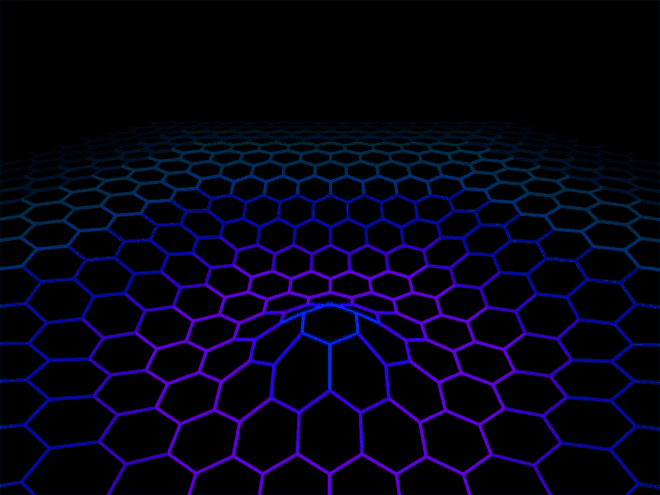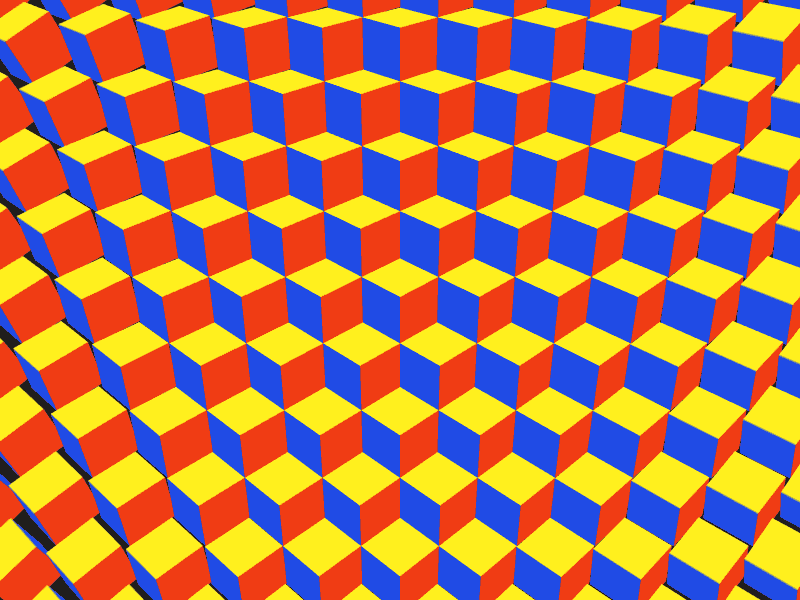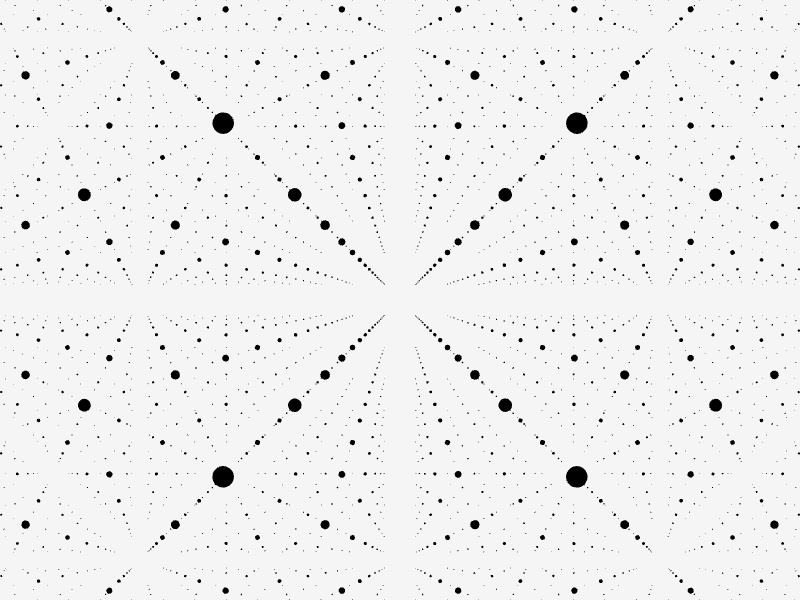Math is a subject that makes many artists pull an Edvard Munch, but scientist David Whyte uses cosines and exponentials the way Toulouse-Lautrec used oil paints. Whyte is a Ph.D. candidate at Trinity College in Dublin and has co-authored papers on esoteric topics like a Z-cone model for the energy of an ordered foam, and is also a prolific artist whose medium of choice is the animated gif.
His work isn't the usual fare of goofy cats or pop culture remixes. Rather, Whyte is an evolutionary Escher who makes two-dimensional images pulsate, dissipate and reform in a hypnotic loop fueled by lessons learned in a high-school math book. One of Whyte's works, titled Weaving Stars is a prime example. "It was one of those ones where I knew what I was making the shapes do, but I didn't realize until it had rendered just how bewildering the effect was," he says. "It took me a few loops to get my head around the effect that I had made myself."
It's hard not to see the influence of Gestalt Psychologists and Op Artists like Bridget Riley on Whyte's work, but he credits the community of GIF artists on Tumblr as his primary influence. "The GIF art community on Tumblr has definitely rubbed off on me more than any 'real' artists," he says. "My main artistic influences are the other good people on Tumblr doing the same thing I am---making abstract little animations just for the fun of it."
Whyte is a published physicist, but the self-taught artists's creative process is the opposite of the scientific method. Occasionally, an idea will bubble up from his research on foam dynamics, but he says more often than not the ideas pop into his head fully formed. With an idea in mind, he quickly works out the big beats in a sketchbook and proceeds to rapidly prototype his animations using the programming language Processing paired with a reflexive understanding of trigonometry. "Nowadays, since I'm comfortable with the few tricks I have up my sleeve, I can bash out a typical simple animation in about half an hour or so." Whyte also accepts commissions and he's helped several companies create dynamic corporate identities using his animation techniques.
The big question is, could Whyte's psychedelic artwork on Tumblr lead to a breakthrough in foam science? Sadly, it's unlikely. "I don't really see myself ever directly combining the two in any meaningful way," he says, though his aesthetic impulses bleed through in other ways "I do always enjoy making nice looking figures for my research."


